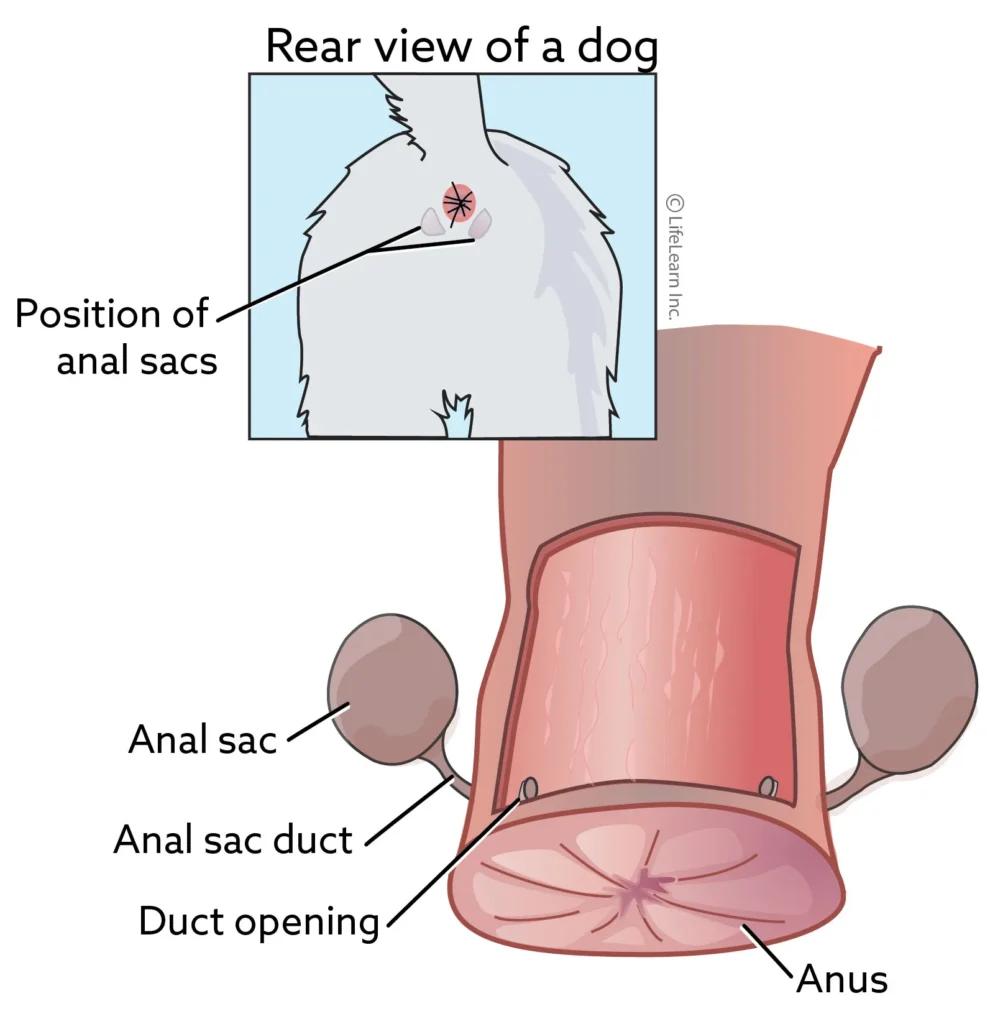Anisocoria in Dogs

Anisocoria is a condition in which the pupils of the eyes are different sizes; one pupil is larger than the other. Anisocoria is a symptom of an underlying condition or disease that needs to be identified and treated. Prognosis is guarded pending the diagnosis and treatment. Blindness may occur as a result of the underlying condition.
Anemia in Dogs

Anemia is a medical term that refers to a reduced number of circulating red blood cells, hemoglobin, or both. Anemia has a wide variety of causes and appropriate treatments based on the specific cause. Signs of anemia include the loss of the normal pink color of the gums, loss of energy or stamina, weight loss, labored breathing, loss of appetite, a faster than normal heart rate, or signs of blood loss. Several tests are performed to diagnose anemia and additional testing may be required to determine the specific cause. Toxins, infectious diseases, or cancer are some possible causes. Prognosis is variable depending on the underlying cause and how early anemia is diagnosed.
Anaphylaxis in Dogs

Anaphylaxis is an acute severe allergic reaction caused by an overreaction of the body’s immune system to an allergen such as a food protein, medication, vaccine antigen, or other chemical. The most common signs include itching, cutaneous edema, hives, excessive drool, vomiting, diarrhea or respiratory distress. Diagnosis is made based on history and physical exam.
Anal Sac Disease in Dogs

Anal sac disease is a common problem in dogs that can be very uncomfortable or painful. Signs to watch for, diagnosis, and treatments, including identifying and managing underlying causes are outlined in this handout.
Amyloidosis in Dogs

Amyloidosis occurs when amyloid proteins are deposited outside cells in various tissues and organs, causing tissue and organ dysfunction. It is uncommon in dogs, except in beagles, Chinese Shar-Peis, collies, treeing walker hounds, and English foxhounds. Signs depend on the organs involved, but kidney involvement is most common. If kidneys are involved, signs include mouth ulcers, weight loss, vomiting, and dehydration. For dogs with liver involvement, signs include weakness, pale gum color, distended abdomen, rapid heart rate, rapid breathing, abdominal pain, and collapse.
Addison’s Disease in Dogs

Addison’s disease is caused by the decreased release of the hormones cortisol and aldosterone from the adrenal cortex. Most commonly caused by immune-mediated destruction, Addison’s disease can also be caused by trauma, infection, neoplasia or hyperadrenocorticism treatment. Clinical signs are non-specific and often come and go. The most definitive diagnostic test for Addison’s disease is the ACTH stimulation test.
Acute Respiratory Distress Syndrome (Shock Lung) in Dogs

Acute respiratory distress syndrome, also known as shock lung, is a life-threatening complication of critical illness in dogs, such as systemic infection or disease, severe trauma, or near-drowning. Treatment involves targeting the underlying cause while also supporting the dog’s compromised lung function with the use of an oxygen cage, an oxygen line direct to the dog’s nasal passages, or in severe cases, a mechanical ventilator. Unfortunately, the prognosis for this condition is poor.
Acute Hemorrhagic Diarrhea Syndrome in Dogs (Hemorrhagic Gastroenteritis)

Acute hemorrhagic diarrhea syndrome, also known as hemorrhagic gastroenteritis, is an acute disorder of dogs characterized by vomiting and bloody diarrhea. There are several possible causes and contributing factors involved and diagnosis is often a process of eliminating other causes of bloody stools and gastrointestinal distress. Affected dogs will appear severely ill and, if left untreated, may die. In most cases, the disorder appears to run its course in a few days if the dog is given appropriate supportive care.
Acne in Dogs

Canine acne is an inflammatory disorder of the lips and the skin of the muzzle. Dogs with mild cases of acne often have red bumps or pustules on their skin. This can, in more severe cases, lead to generalized swelling of the lips and muzzle, bleeding wounds, or scabs on the face. Commonly affected breeds include Boxers, English Bulldogs, Great Danes, German Shorthaired Pointers, and others. A variety of treatments are available and depend on the underlying cause of the acne.
Abscesses in Dogs

Abscesses are firm or compressible, often painful swellings that contain pus. They can develop in many areas of the body including around tooth roots, anal glands, under the skin, or in the liver. Abscesses are caused by the introduction of bacteria through wounds, injuries, or bloodborne in the case of an internal organ abscess. Any area of the body that becomes infected can eventually cause an abscess to form such as anal gland abscess, bite wound abscess, prostatic abscess, or brain abscess from inner ear or sinus infection. Treatment depends on severity and location and usually involves removal of the pus either through drainage or surgical removal, the use of antibiotics based on the type of bacteria and location of the abscess, and pain control medications. Monitoring after initiating treatment includes watching the site for additional drainage if the abscess was superficial or monitoring the pet for improvement of clinical signs. Delayed treatment of abscesses can lead to chronic draining tracts or worse.

